#2023 Goya Awards
Photo

sophs-style:
Anna Castillo at the 2023 Goya Awards on Sunday (12th February) held in Seville, Spain.
#anna castillo#2023 Goya Awards#37th Goya Awards#appearance#appearances#event#outfit#Gucci#messika#celebrity style#celebrity fashion#celeb style#celeb fashion#red carpet style#red carpet fashion#fashion#style#stylish
5 notes
·
View notes
Text
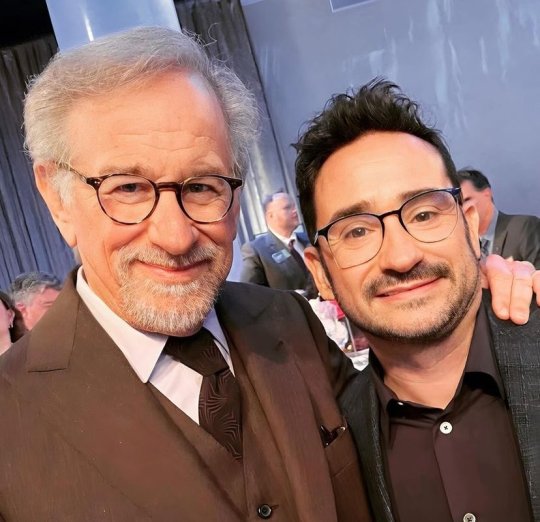
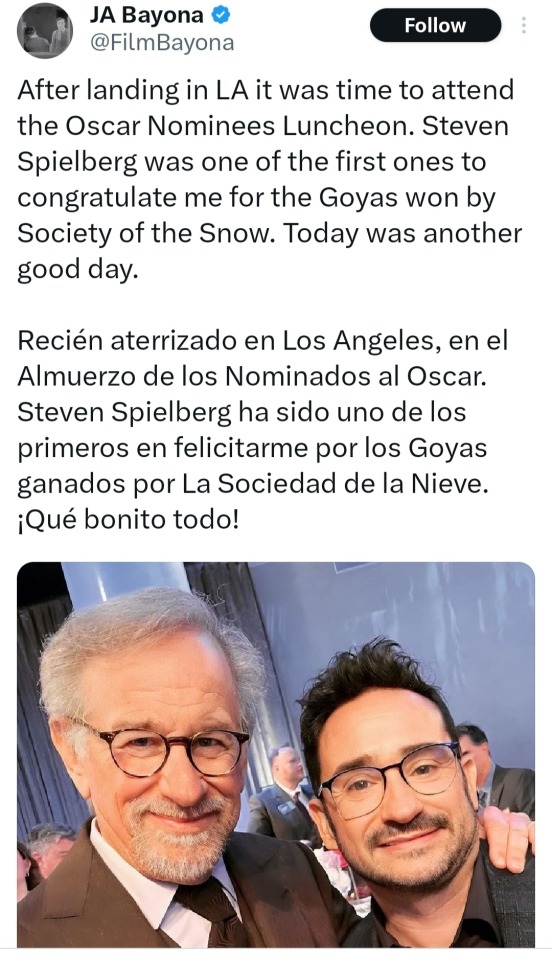
#j.a. bayona#steven spielberg#spielberg#society of the snow#netflix#2023#2024#movie#goya awards 2024#Oscar#Oscars#96th oscars#96th academy awards#academy awards#Jurassic World: Fallen Kingdom#Jurassic World Fallen Kingdom#Jurassic World 2#Fallen Kingdom#Jurassic World#Jurassic 5
7 notes
·
View notes
Text

Penélope Cruz | Chanel Fall 2023 Couture dress | Goya Awards | 2024
6 notes
·
View notes
Text




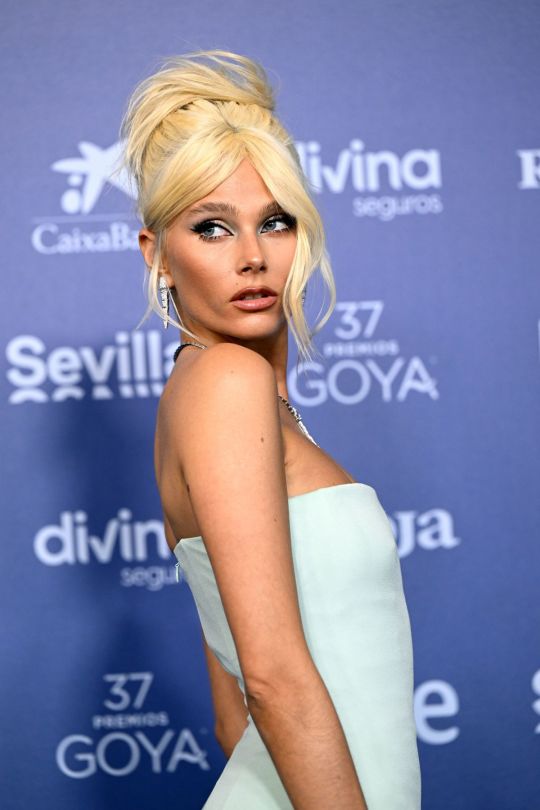



Hermosa 💜
#valentina zenere#goya awards#2023#seville#blue carpet#gorgeous#woman#amazing#dress#hairstyle#make-up#goals#elite#actress
9 notes
·
View notes
Text
Who Wore What Jewels Weekly
Who Wore What Jewels Weekly
We’re rounding up the best jewels of the week. From Michael B. Jordan doubling up on the Tiffany & Co. Schlumberger “Bird On A Rock” brooches to Pamela Anderson’s very sweet WWD princess moment courtesy of her Fred Leighton vintage diamond tiara to Kim Kardashian’s very appropriate heart-shaped diamond necklace she wore to her SKIMS V-day pop-up.
Scroll down to see who wore what jewels and vote…

View On WordPress
#celebrity jewelry at movie premieres#celebrtity jewelry#Evangeline Lilly&039;s jewelry at UK premiere of Ant-Man And The Wasp: Quantumania#Jennifer Lopez&039;s jewelry at LA premiere of Shotgun Wedding#Kim Kardashian&039;s necklace at the opening of SKIMS Valentine&039;s Day Pop Up in LA#Kristen Stewart&039;s Chanel Noued necklace at 2023 Berlin Film Festival#Michael B. Jordan&039;s Tiffany & Co. jewelry at the European Premiere of Creed III#Nieves Alvarez Bulgari jewelry at 2023 Goya Awards#Reese Witherspoon&039;s jewelry at the World Premiere Of Netflix&039;s "Your Place Or Mine"#Sarah Michelle Gellar&039;s earrings at LA Wolf Pack premiere
1 note
·
View note
Text






Kiernan Shipka attends the Fashion Trust US Awards at Goya Studios on March 21, 2023 in Los Angeles, California.
51 notes
·
View notes
Photo
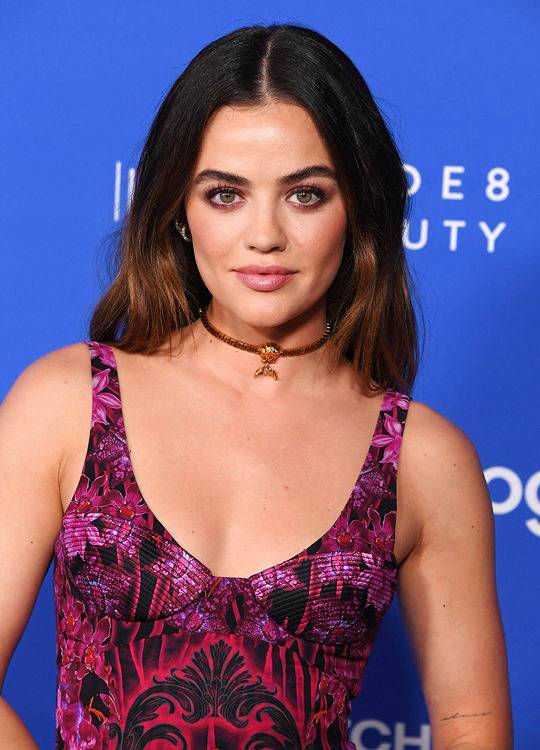


LUCY HALE @ Fashion Trust U.S. Awards held at Goya Studios in Los Angeles (March 21st, 2023)
#lucy hale#lhaleedit#pllcastedit#lhaledaily#plledit#femalesource#femmefataldaily#thequeensofbeauty#starsdaily#dailystarsofbeauty#flawlessbeautyqueens#flawlessbeautyqueen#dailyactresses#dailywomansource#dailywomanedit#wonderfulwomendaily#wonderfulwomanedit#goddess#breathtakingbeautyqueens#absolutely breathtaking#cwladiesdaily#glamoroussource#glamourous#femaledaily#dailytvwomen#flawlessfemale#femalestunning#flawlesscelebs#dailywomen#event 2023
176 notes
·
View notes
Text


March 21, 2023 - Fashion Trust Us Awards at Goya Studios.
#phoebe tonkin#thequeensofbeauty#glamoroussource#wonderfulwomendaily#femalegallery#femalestunning#femaledaily#dailycelebs#dailywomanedit#dailywomen#dailywomansource#flawlesswomen#flawlessfemale#flawlesscelebs#flawlessbeautyqueens#phoebetonkinedit
74 notes
·
View notes
Text
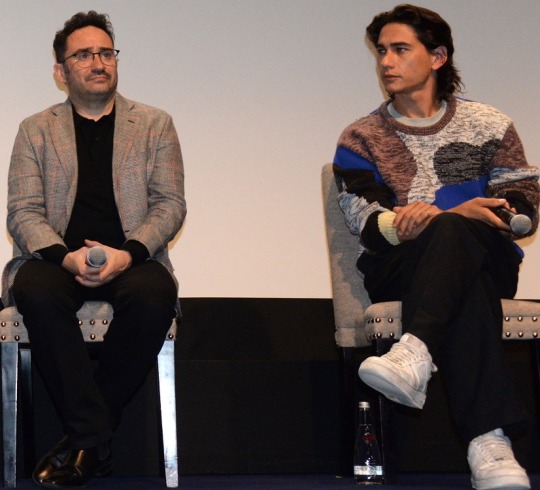
JA Bayona and Enzo Vogrincic
Society of the Snow is One of the Most Harrowing films of All Time – and Chilling As Well
by Brad Balfour
It’s an understatement to say that I’ve seen lots of films with varying degrees of frightening circumstances informing them. But Society of The Snow was one of the most harrowing – well deserving of award nominations, including the Oscar for Best International Feature. Though the film is fiction, it’s based on a true story and is done in such a way that you feel yourself actually experiencing the cold, anguish and pain as the story reveals itself.
In 1972, a Uruguayan rugby team chartered a flight to Chile, which catastrophically crashed on a glacier in the heart of the Andes. Of the 45 passengers on board, 29 survived the initial crash, although more would die from injury, disease, and an avalanche over the following weeks. Trapped in one of the most inaccessible and hostile environments on the planet, the survivors were forced to resort to survival cannibalism of those who had already died in order to stay alive. However, rather than turn against each other, the survivors drew upon the cooperative teamwork they learned through rugby, along with their spiritual faith, in order to escape the mountains. Only 16 of the 40 passengers ultimately survived.
Director JA Bayona discovered Pablo Vierci's 2009 account of the crash, La sociedad de la nieve, while conducting research for his 2012 film The Impossible. He bought the rights for the book when he finished filming that movie. Bayona recorded more than 100 hours of interviews with all of the living survivors. The cast is composed of Uruguayan and Argentine actors, most of whom are newcomers. The actors had contact with the survivors and the families of the victims.
Society of the Snow was the closing film at the 80th Venice International Film Festival, in an Out of Competition slot. It played in theaters in Uruguay, Spain and a limited run in the United States in December 2023, before streaming on Netflix in January 2024. Society of the Snow received positive reviews and won 12 awards including Best Picture and Best Director at the 38th Goya Awards and was nominated for Best International Feature Film, representing Spain, along with Best Makeup and Hairstyling at the 96th Academy Awards.
This Q&A with writer-director Bayona and star Enzo Vogrincic took place in front of an audience a few weeks before Oscar Night.
Society of the Snow was shot in sequence, which is so rare now. Also shooting on location with all the challenges. How important was it to you to have an Uruguayan voice to this film, this passion in your life for the last decade?
JA Bayona: This story is not only well-known in the Spanish-speaking world, but also [throughout] the whole world. There are many documentaries about it. There were two movies already done (ed note: Survive! in 1976 and Alive in 1993), so we had to do this one right. We spent the time, and we wanted to shoot in Spanish. There was no way to shoot this film in another language than Spanish with a Uruguayan accent, since it was based on a book by a Uruguayan author with a Uruguayan voice and a Uruguayan actor. It took us 10 years to find the financing, find a place where we were allowed to show up and believe in the film, and believe in the level of ambition we were looking for, again in Spanish. Once we knew the film was going to be done – actually before then – we did auditions for nine months, looking for the actors. I saw 2,000 self-made tapes, and from those, I started to choose faces and meet actors online, because it was during the pandemic. We finally got our cast. That was at the end of 2020. We did two months of rehearsals – which is a luxury – maybe seven weeks. Then, all the cast met the real people they were portraying or the families of the dead. Then we spent a very long shoot, 140 days, which was extraordinary. We created such a beautiful family. Everything that’s in front of the camera was real. The friendship, the love, the sense of camaraderie, and we were there with our cameras. We captured that.

Who was your continuity director? You've been recognized for makeup and hair. This was another-level continuity.
JA Bayona: I gave the actors a lot of space and freedom to improvise, because they were so well prepared. They spent two months in rehearsals, met the survivors, and read the book. They had all the information, and then they worked in similar conditions, with a context that was constantly stimulating the performance. There was a lot of space to improvise. We shot 600 hours of material. The heroes of this film are the editors because they had to deal with that. There were a lot of continuity issues that we had to deal with in the editorial.
Enzo, when it comes to rehabilitation in the hospital, the showers, the emaciated bodies – and being a 2024 film realist – it wasn’t body doubles. Your body weight went from 159 to 103 during the shooting of this film. That was real. How important was it for you, for the living and the dead, to honor your character?
Enzo Vogrincic: While we were making the film, as actors, we always thought we owed the people that survived and those that died, to tell their story as realistically as possible. Therefore, when we were filming things such as hunger or cold, we were barely able to move. It was a way of replicating what they had gone through, beyond our acting, because we knew that we had a responsibility to the people and to the characters. This was not a typical shoot whatsoever. It was part of the story, so fundamentally, we were willing to do whatever it took to get that realism in. After putting in 12 hours of filming and besides, we were eating very little, we found that we could set up a gym afterwards. At night, those of us who were not filming, we were training and continuing to lose weight.
How important was it to you that this project be delivered in a Uruguayan voice?
Enzo Vogrincic: This is something that was fundamental to us because this story has been told before, but not with our voice. I thought that was the key thing to do because – though some theories say we are human regardless of where we took place – but these were the stories lived and survived by actual Uruguayans. We thought that to be able to tell it in the original language, it was important for us to understand the tales of the survivors so we could tell the story better. There were terms, feelings, and all those things which mattered, because it hadn’t been done that way before.
There were scenes that involved faith, the notion of a higher power, permission from God. On the other hand, what kind of God would allow this? Those scenes were directed with great care. Tell us how you approached that?
JA Bayona: I always try to be as close as possible to the characters, to the reality, in order to be able to capture them with a sense of authenticity, a sense of place, of being there. These guys were, most of them, very religious. There was a lot of religious iconography. I like to think the film tries to be more spiritual than religious. I see these people like orphans, abandoned in a place where life is not possible, and they need to reinvent life. They need to, somehow, reconsider what is important and what is not, as human beings.
By doing so, the movie becomes a mirror of ourselves. They had to start everything from scratch. They were abandoned by the authorities, they were abandoned by their families, so they had to. For them, it was a journey of self-discovery. It was also a way of understanding that God was everywhere, in order to survive. There was not a religious institution in the middle.
When we mention cannibalism, when we talk about it, that's a word they don't like to use. I think this film makes a big change; in that it's not about taking. It's about giving, about giving yourself to others and suffering the same pain that they are suffering. By doing that, feeling empathy …understanding that you and the other person in front of you are really the same. It's like when Gustavo Zerbino told Roberto Canessa, "You have the strongest legs, you need to walk for us." [And he did just that, walking out from the crash down the mountain towards civilization until they were found, which saved everyone who remained.]
There's an immediate realization that you and the other ones are the same. We are all the same. To me, that feels sacred, spiritual and transcendent. To understand that we are all part of the same thing. That resonates in the world we live in right now, especially with young people. We are surrounded by so much conflict, and finally having this story that tells you that we are all part of the same thing, that we are all aboard the same plane. We need to come together to find a solution. We had such an important message. That was our fuel.
With today's GPS, the flight would have landed at its destination safely, one would hope. You had to get the technical details right. The formal report said it was pilot error. That's clear from your work. How challenging was that, starting with your visit to the crash site?
JA Bayona: We had to give the context to make others understand what they went through, and by doing so, what they did. We put so much effort into all the details, like talking about the type of plane. We went to the Uruguayan Army. We had a very honest conversation with them. They accepted that it was human error. But it was actually a combination of human error with some kind of an early model of GPS that failed that day. They basically had to do this turn there because that kind of plane was not able to fly at 40,000 feet. So they had to go through a lower pass. They had to do this kind of U-turn. It takes 20 minutes to get from one side to the other. They turned to the right only when they were six minutes into it. That's why it's considered to be a human error because there was no way that the pilot didn't know that. The pilot had done that journey many times. But we really don't know what happened in that cockpit. I decided to leave the camera outside of the cockpit out of respect for the pilots. We knew that there was a machine that failed there. But anyway, we decided out of respect not to get into that space, so we stayed with the other characters.
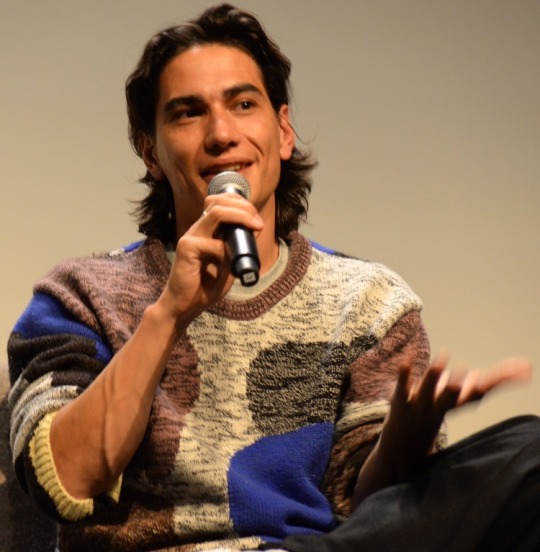
Will your life ever be quite the same after the experience of filming this movie?
Enzo Vogrincic: In life, everything you do changes you. You're never the same after an experience this informative. Of course, I’ve changed. I am different. I like to take every opportunity to continue changing myself. The biggest changes were on a professional level and in terms of how much I learned. I had to go in depth into my character and we spent one to three years with those people talking about life, death, friendship, love, family and making friends. I've made 25 new friends and therefore I like to think that I did change.
Talk about your immersion in your new extended family. The family of the living and the family of the dead.
JA Bayona: I sent an email to the survivors in 2011 and in that first email, I already sent a line about Roberto Canessa that said, “Talking to the dead, accepting peace, gives us the chance to live other lives we didn't have the chance to live.” I was very struck by that conversation between the living and the dead and that sense of depth towards the dead. The more I was in contact with the survivors and the more we talked, the more I realized that they needed the film to be completed and released even more than I did.
My big question was what was left to say after so many documentaries, books, and movies. Now I realize, after seeing the film with them, that it was not about telling something that wasn't being told yet. It was more about giving them the chance to say thank you to people who’d been so important. I see how it was like a poetic thing, the fact that people who didn't make it, they gave everything they had for these people to be alive. Now they are using their testimony to bring these people back, to keep them alive again on the screen. By doing so, I realized that they were comfortable with the story. So it was more about giving these folks a chance to say “thank you” to those who had helped while capturing the mood, feelings and context of what they had gone through so that people seeing the movie would understand what had happened.
In the hands of another director, the debate over sheer survival might not have been handled as beautifully as it was with you. There's a line in the script where Enzo’s character says, “What was once unthinkable became routine." As the black & white photos are being taken, there's a shot showing a human rib cage in the background, almost cavalierly, but it mostly was kept out of the photos. The pictures, of course, are still with us today. They're on the web for people to see. You've managed to take on such a life-and-death topic and deal with it matter-of-factly but with great respect and discretion.
JA Bayona: I'm so glad that you asked about that “unthinkable” line because that's life. That's life. First, you do what you think is impossible, then you get used to it, and then there's a moment that you don't pay attention to it. Our ordinary lives are about that. These people remind us how important every single detail is in our lives. It doesn't matter if your skin is black or white or if we’re American or Spanish. We each have our chance to live life. But when you meet these guys, you meet people who’ve been given an extra chance. That makes a big difference. Their story helps us realize that sometimes we complain and don’t appreciate what we have, the fact that we do have lives to live.
How cold did it get? At what altitude did most of the filming take place?
Enzo Vogrincic: Well, I have to admit, it was hard to tell this story. You feel you have to go through the pain yourself, in order to tell it well. The shooting was hard, obviously, because you have to connect the pain with your own body. We had to lose weight and experience the cold. You have to do it until your body becomes part of that character’s story. There were experiences that allowed us to feel the pain. We were able to work less on certain things and still retain the emotional tone of the story. The emotions didn’t take over necessarily when your body had to suffer. There were other important components, too, in addition to the pain and the suffering. You were able to see that you had a duty to carry out which took you beyond the pain, because you had a story to tell in a competent way.
JA Bayona: Let me add one story. Enzo did such an extraordinary job. He was so committed to the performance of Numa that when we finished the shoot we had to go back to the Andes because the first time we went, there had been very little snow because of global climate change. We went for one year. Once we finished the shoot, we went back to shoot again in the background. Secretly he was in Uruguay, and I called Enzo and said, “What are you doing next Wednesday?” He said, “Nothing.” I said, “I want to take you to the actual place where the plane crashed. I don't have permission from the other producers, but I think I can manage to bring you there. How much is the ticket?” He said, "$400.” I said, “Well, we can pay $400. I can talk with the insurance company and the professional drivers.”
I secretly took Enzo finally with the blessings from the other producers just because he did so much. We had this shoot then we had the person in Germany that was to do this film. I really wanted Enzo to be there and be able to shoot some shots that were very helpful for the film. You can treat the audience by putting in a couple of shots of Enzo there and there. At the same time, Enzo had a closure to that journey. He was able to do these shots but was also able to stand in front of the great theater. I don't know what you said there, what you did there, but you had your moment there. To me that was very important. When you do a film, the whole atmosphere affects the final result. I pay attention to these kinds of details. Also, I wanted him to be there and have that closure.
Having just shared this in a theater, I know that’s what movies are designed for, communal viewing experience. But when someone watches your movie on a streaming device. How does it affect you? And to be honest, can you interpret it for any language that it needs to be interpreted for?
JA Bayona: Can we take the Netflix people out of the room for a second? No, listen, we spent 10 years trying to make the financing for this film. We tried to do this film by conventional windows to the cinemas. Apparently, there is no market for Spanish films that are over $10 or $15 million in budget. We couldn't do this film with that budget. We spent 10 years and when we were about to give up, Netflix showed up and put in the money and gave us the freedom. They made the film possible.
At the same time, I come from Spain. To me, it's more difficult to handle the market in the US than in Spain. I'm quite popular there. We released the film on December 22nd. It was a limited release, 100 cinemas. Normally one of my films would be in 500 cinemas. We released the film in 100 cinemas. I decided to go with the film. Every week, I went to a different city and showed the film. The film is still in the cinemas, in the same number of cinemas. We've done 100 million admissions. The film actually is doing better since it's on Netflix. I'm very happy that Netflix made the film possible and made it accessible to the whole planet. We had 100 million people watching the film in the first 10 days. So it’s not true. There is a market for Spanish films. But I'm glad that the movie is still in theaters for people who want to see it there.
Copyright ©2024 PopEntertainment.com. All rights reserved. Posted: March 6, 2024.
Photos © 2024 Brad Balfour. All rights reserved.
youtube
14 notes
·
View notes
Text
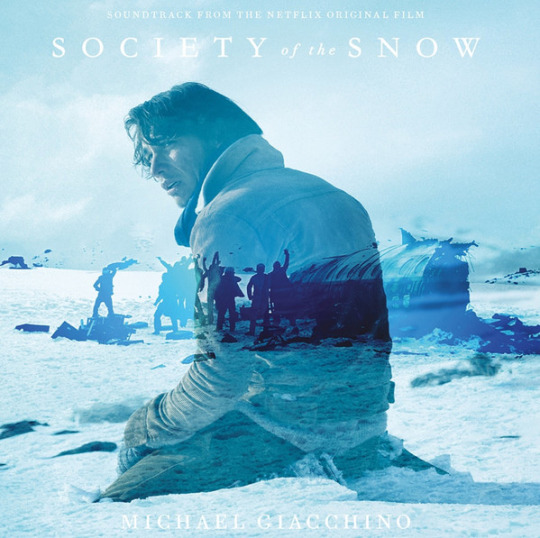
Society of the Snow ❄️
The 96th Academy Awards are upon us, with the 2024 Oscars taking place this weekend on Sunday, 10th March 2024 · Society of the Snow has been nominated for two Oscars, for Best International Feature Film, Not in the English Language as well as the best makeup and hairstyling. Society of the Snow became the third-most-prized film in Goya history after winning 12 awards at Spain's Goya Awards and winning a European Film Award but the interest is not just for the awards but for the true story behind this film/Thriller/Adventure documentary.
Directed by Juan Antonio García Bayona, the Spanish-language film is about the 1972 plane crash that stranded dozens of people–most notably players of an Uruguayan rugby team–on a glacier in the Andes. But it was Pablo Vierci’s Society of the Snow, a non-fiction account of the disaster, published in 2008 and made with the full collaboration of the survivors and their families, that caught Bayona’s interest. The film is an adaptation of Pablo Vierci’s book. The cast is composed of Uruguayan and Argentine actors, most of whom are newcomers.
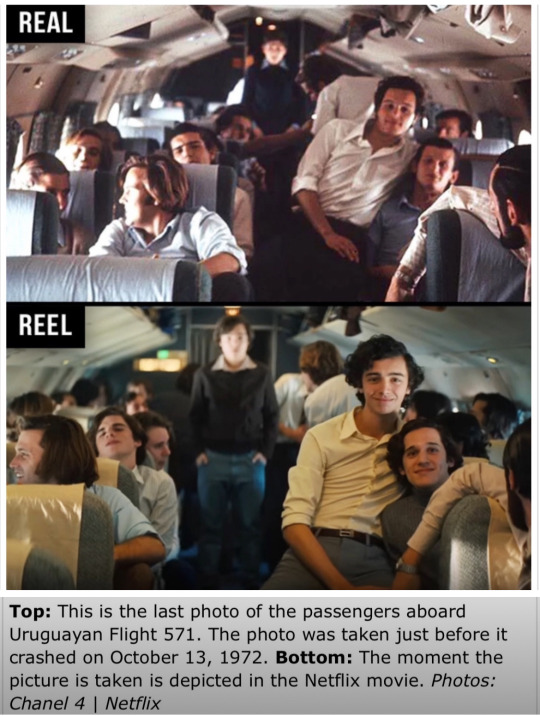
In case you have no idea about this film, please, let me explain: The rugby world knows very little about this story, so after watching the Rugby World Cup in France last year 2023 and seeing the resilience of the Uruguayan rugby team in the World Cup, I watched the film and read books getting more and more interested in the subject. The Snow Society tells the true story of Uruguayan Air Force Flight 571, a plane that crashed in the Andes in 1972, leaving a rugby team and its fans hungry and stranded for 72 days. There were 45 people on the flight, 40 passengers and 5 crew members. 19 of the passengers were members of the Old Christians Club rugby team.

Old Christians Club, or simply Old Christians, is a Uruguayan sports club from Carrasco, it is a neighbourhood of Montevideo. The club is known mostly for its rugby union team which became famous around the world due to the Uruguayan Air Force Flight 571 crash that involved the first division team of the club in 1972. Old Christians amateur rugby team charted a Uruguayan Air Force plane to transport the team's players, friends, fans and family members to Santiago, Chile, for an exhibition match.

It is Highlighted by one of the better plane crash scenes put to film in quite some time, Bayona, who also directed The Impossible (the criminally underseen survival pic about the extremely deadly 2004 tsunami), treats the audience to an immersive, detailed, and gritty look at how the young men who were eventually rescued from the icy slopes survived for nearly two months.
That's been dramatised many times before, most notably in 1993’s “Alive”, starring Ethan Hawke, but the director J. A. Bayona’s rendition may be the most immersive take yet.
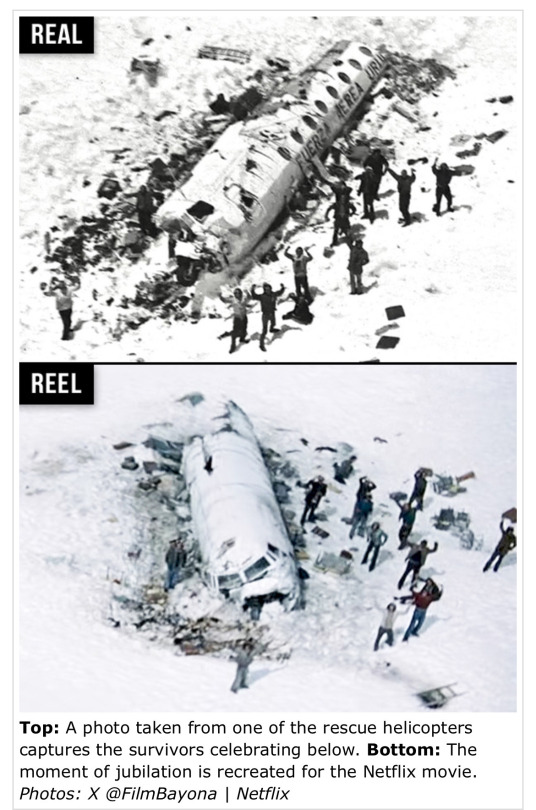
The crash scene is meticulously re-created—people being sucked out of the fuselage, bones shattering as the seats get ripped from the floor, bodies crumpling toward the cockpit. Most of the film takes place on the mountain range’s blinding snow-covered slopes, the victims’ skin bluish with frostbite, and the sound of howling winds incessantly. Almost every shot highlights the frigid, terrifying reality of what happened.
In my opinion, J.A.G. Bayona did an incredible job directing the film because I felt their stress and desperation, their fear and hope, and I feel this is one of those films that are a complete experience, one of those that makes you value everything you have and open your eyes. It’s a gruesome tale —the survivors eventually resorted to cannibalism— The survivors (and the not-lucky ones) became a life inspiration.
They wanted to live, they dreamed of living, they fought to live, they did EVERYTHING and more to achieve success, and thanks to those guts they wrote their story.

Society of the Snow is the Definitive Account of the World’s Greatest Survival Story. Waiting for a rescue team that didn't arrive, the survivors became fewer and fewer in numbers. Stranded alone on a glacier, they had to face brutal temperatures, lethal avalanches and the loss of friends and family with no access to supplies, food or water. In order to survive, they had to do the unthinkable. It wasn't until seventy-two days later that they were able to reach safety.
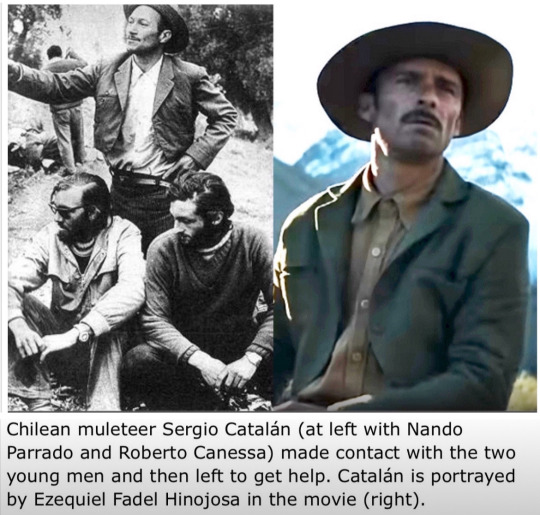
Eventually, two of the survivors – Nando Parrado and Roberto Canessa – were able to find help after embarking on an improbable hike into Chile, which took 10 days and saw them climb a 4,650-metre peak and travel 61km (37.9 miles) without any mountaineering gear.
Thanks to their efforts, the remaining team members were subsequently saved, and the incredible tale of survival became known as the Miracle of the Andes.
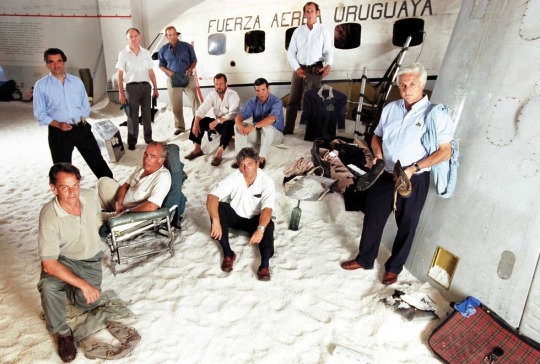
The Survivors- Sipa/Shutterstock
To increase the film’s realism, director J.A. Bayona decided to film footage at the actual crash site in the Andes, El Valle de las Lágrimas, which translates to The Valley of Tears (the name the location received after the tragedy in Chile).
The film's filming locations spanned the Catalan city of Terrassa, the rugged Sierra Nevada mountains in Spain, and the formidable Andes mountains, adding to the cinematic allure of the survival tale.
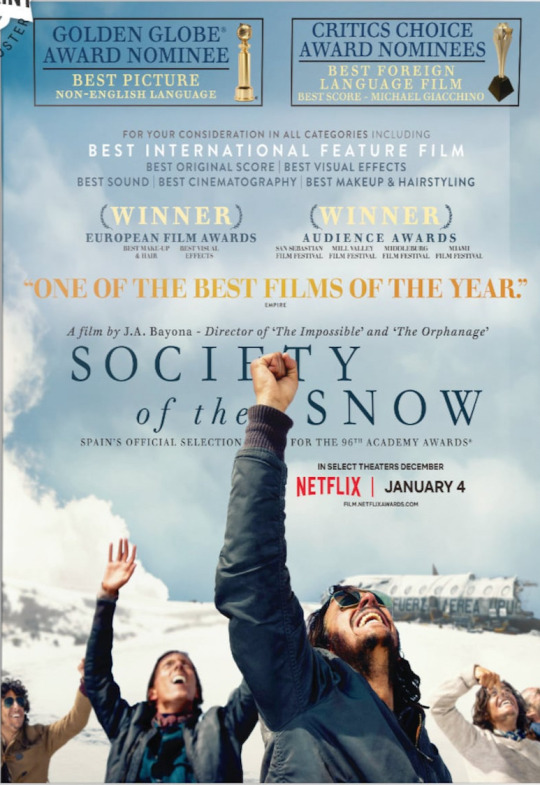
Society of the Snow appears to be a smash hit with both the critics and audiences, and is certainly one of the best Netflix films of recent times – it has a 90% Rotten Tomatoes score and 83% audience rating. If you haven't seen it yet, then I highly recommend you give it a go.
The Oscars are about to begin. The Dolby Theater in Los Angeles is already rolling out its red carpet.
youtube
#SocietyoftheSnow #JAGarcíaBayona #Director #96thAcademyAwards #Oscar #Spain #film #BestInternationalFeatureFilm #PabloVierci #Spain'sGoyaAwards #EuropeanFilmAward #Thriller #Adventure #documentary #Rugby #Uruguayanrugbyteam #Spanishlanguage#book #OldChristiansClubrugby #UruguayanAirForce #Flight57 #World’sGreatestSurvivalStory #MiracleoftheAndes
@brian-in-finance Yeah! Survivors of the Andes (1976) (Supervivientes de los Andes ) was a Mexican film directed by René Cardona, based on the 1973 book Survive! by Clay Blair, which is based on the story of Uruguayan Air Force Flight 571. The film received negative criticism, not a top budget film but still they could have put in a little more effort than what they did a very poorly done.
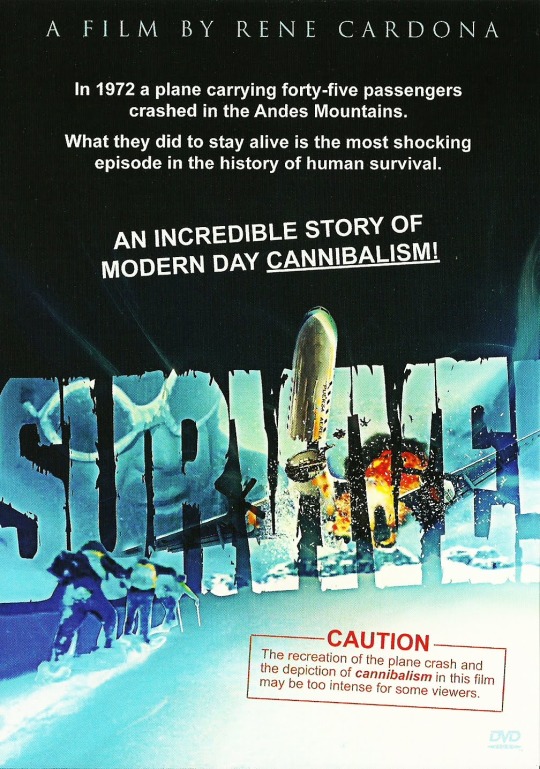
8 notes
·
View notes
Photo

sophs-style:
Clara Lago (wearing Dior) at the 2023 Goya Awards on Sunday (12th February) held in Seville, Spain.
#Clara Lago#2023 Goya Awards#37th Goya Awards#appearances#appearance#event#outfit#dior#bvlgari#celebrity style#celebrity fashion#celeb style#celeb fashion#red carpet style#red carpet fashion#fashion#style#stylish
2 notes
·
View notes
Photo

Amaia Salamanca | Zuhair Murad Fall 2022 Couture gown | Goya Awards | 2023
#pc: glamour#amaia salamanca#zuhair murad#zuhair murad fall 2022 couture#goya awards#2023 goya awards#2023
7 notes
·
View notes
Text
Some of the nominations Society of the Snow (La sociedad de la nieve) received in Awards shows:
San Sebastian Film Festival (happened on September 2023 in Spain)
Audience Award (won and scored the highest rating ever for the award)
European Film Awards (happened on December 9th, 2023 in Germany)
Visual effects (won)
Make-up & hair (won)
Golden Globe Awards (happened on January 7th in USA)
Best Motion Picture – Non-English Language (didn't win)
Critics Choice Awards (happened on January 14th in USA)
Best Foreign Language Film (didn't win)
Best Score (didn't win)
Premios Goya (Goya Awards) (happens on February 10th in Spain)
Best film
Best original score
Best editing
Best production supervision
Best makeup and hairstyles
Best costume design
Best new actor
Best art direction
Best special effects
Best cinematography
Best sound
Best adapted screenplay
Best director
BAFTA Awards (happens on February 18th in UK)
Film Not in The English Language
Oscars (happens on March 10th in USA)
Best international feature film of the year
Achievement in makeup and hairstyling
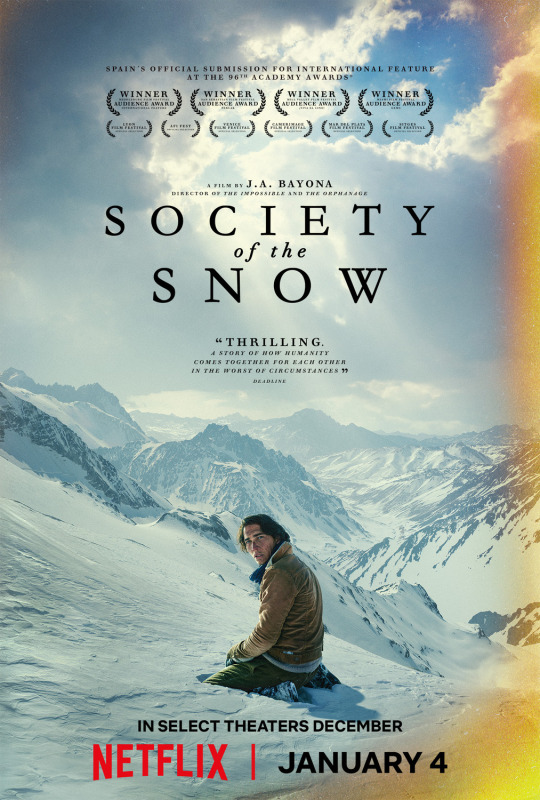
#the society of the snow#society of the snow#la sociedad de la nieve#ja bayona#oscars#international films#bafta awards#critics choice#golden globes 2024#european film awards#premios goya#san sebastian film festival#oscars 2024
9 notes
·
View notes
Text








Guapa 🖤
#maría pedraza#goya awards#2023#seville#blue carpet#gorgeous#woman#black dress#hair#make-up#goals#spanish#actress
5 notes
·
View notes
Text
Recaps of the Premios Goya Awards where the creator or Lightbox team Tadeo Jones has been nominated for the Premios Goya Awards from 2006 until the present.

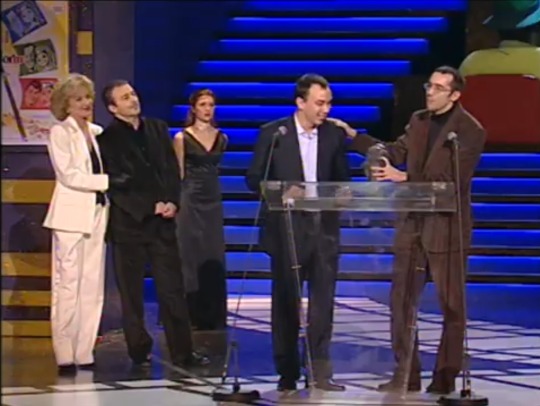
...This is the first Premios Goya Award in 2006 that the short film Tadeo Jones won.
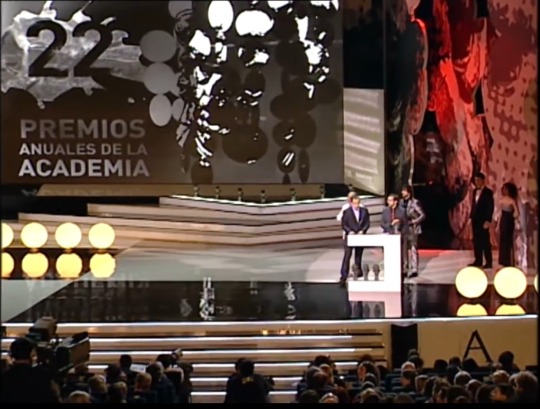
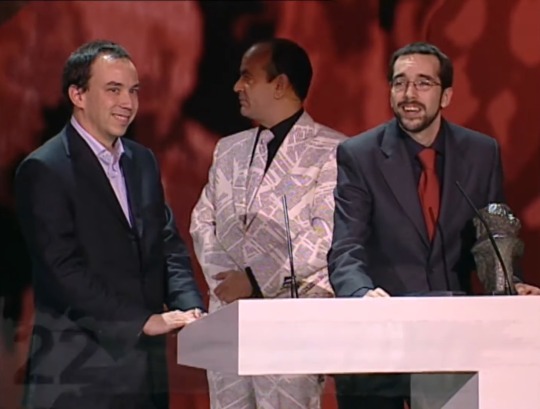
Premios Goya in 2008
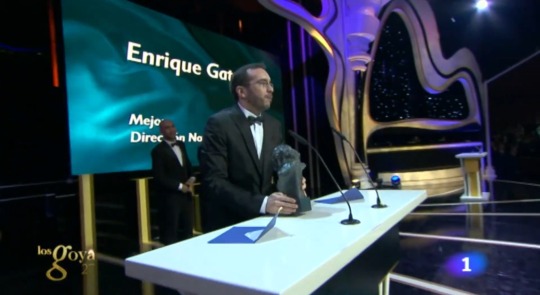

In 2013, the first film won two Premios Goya awards.
There are Mejor Dirección Novel (Best New Director) and Mejor Largometraje de Animación (Best Animated Feature Film) awards.

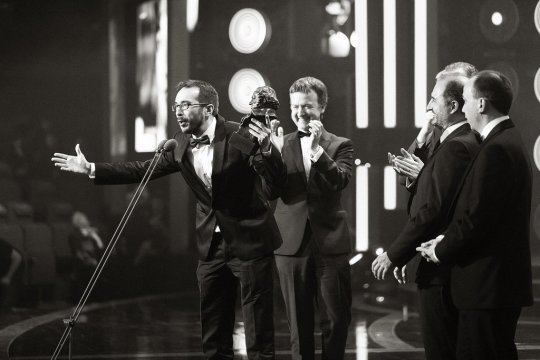
In 2016, Atrapa La Bandera (Capture the flag) also won the Premios Goya award.

Premios Goya in 2018
All recaps from which the production team received the Premios Goya award last year. Tadeo Jones 3 did not win the Premios Goya 2023 award, which is a pity. But if Tadeo Jones 4 is released in 2026, it means that this movie may be nominated for the award. Premios Goya in 2027... Well, we're waiting for Tadeo Jones 4 to come soon...
We hope so......
#tad the lost explorer#tadeo jones#tadeo jones 2#tadeo jones 3#premios goya#tad the lost explorer 4#atrapa la bandera
6 notes
·
View notes
Text










Kiernan Shipka attends the Fashion Trust US Awards at Goya Studios on March 21, 2023 in Los Angeles, California.
66 notes
·
View notes